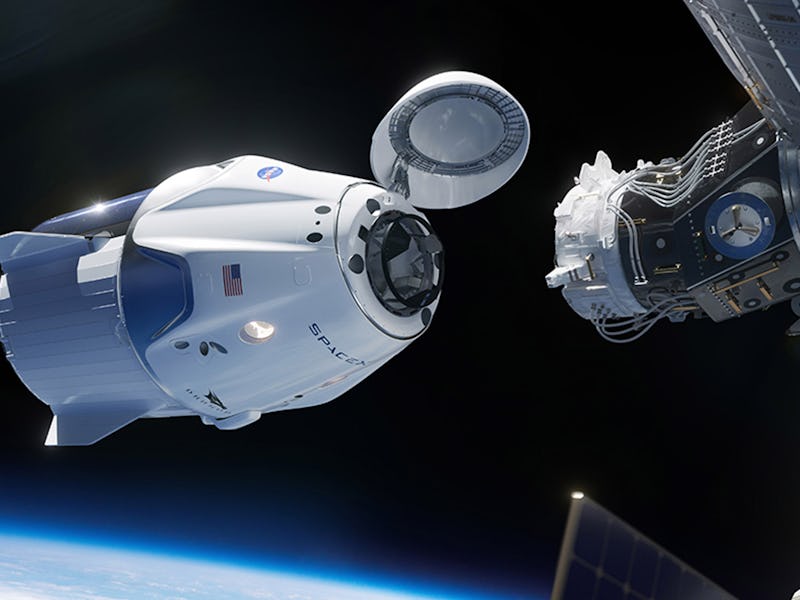Musk Reads: Crew Dragon gets a launch date
The Dragon missions offer a surprise benefit and Rocket Lab impresses. How do you exit the Starship?

The Dragon missions offer a surprise benefit and Rocket Lab impresses. How do you exit the Starship? It’s Musk Reads: SpaceX Edition #161.
But first: We’re building something awesome and new for Musk Reads subscribers. For a hint of what’s to come, we’d love if you could fill out this survey for the Musk Reads Top-Secret Project. More info coming soon!
A version of this article appeared in the “Musk Reads” newsletter. Sign up for free here.
Musk quote of the week
“In the future, it will be as strange to have expendable rockets as it would be to have expendable airplanes today. All will be reusable.”
- Read more about Musk’s plans for rockets.
SpaceX
The Crew Dragon has a tentative launch date: May 27. That’s when SpaceX will launch “Demo–2,” the company’s first manned mission, with astronauts Doug Hurley and Bob Behnken on board. It will be a major test for both SpaceX and its Crew Dragon capsule, which completed its first unmanned trip in March 2019. The firm has since been working to perfect the capsule, ensuring it’s ready for humans.
It should be a momentous time for SpaceX, but Musk seemed relatively downbeat on his Twitter page. On April 17, Musk called it “good progress” but added that “18 years to launch our first humans is a long time.” Attaching an “Occupy Mars” image that calls for humans to colonize the Red Planet, he added that “technology must advance faster or there will be no city on the Red Planet in our lifetime.”
That doesn’t mean SpaceX hasn’t been making progress. Musk explained that the firm has built up experience in docking to the International Space Station through its CRS missions. The Dragon missions, Musk explained, would help boost its capabilities with orbital refueling. This will enable a ship with a smaller design to refuel in space and continue its mission to Mars. Read more.
What’s next for SpaceX: SpaceX is set to launch the seventh batch of 60 Starlink satellites on April 22 at 3:37 p.m. Eastern time. The batch will launch using a Falcon 9 rocket from Space Launch Complex 40 at the Cape Canaveral Air Force Station in Florida.
In other SpaceX news…
Starship failures? Musk declared this not a big deal last week. The SpaceX CEO explained that he was not too concerned about early issues, as production is difficult. SpaceX destroyed prototype models during tests in September 2019, February and this month. An Ars Technica profile published after the February incident noted Musk was unhappy with the failure and requested his employees flag issues directly with him in the future rather than with management. In July 2019, a SpaceX vice president revealed the firm is aiming for a 2021 date for the Starship’s first mission. Read more.
Rocket Lab earned the praise of Musk this week after the firm successfully recovered a rocket using a helicopter in New Zealand. The firm has launched 48 satellites with its 56-foot Electron rocket and plans to host another recovery test in late 2020. Rocket recovery helps bring down the costs associated with spaceflight, but Musk wrote on Twitter that helicopter recoveries are less suitable for bigger rockets. Read more.
Musk Reads mailroom
Patrick Shane writes:
So, in answer, a few to have fun with: ‘Big Falcon Deal!’ ‘Can’t Falcon Believe It!’ ‘Falcon Beautiful!’ ‘Falcon Amazing!’ ‘Falcon Incredible!’ ‘Let’s Leave This Falcon Place!’ ‘Have a Falcon Ball!’ So there’s a start, although maybe more ‘corny’ than ‘cool’, but was still fun!
Ken Krawchuk’s request last week for SpaceX to give its Falcon boosters more interesting names has sparked a discussion. What would you name the boosters?
Rick Lyon writes:
Thanks for the great newsletter! I have a question I cannot seem to get anyone to answer: How will people and cargo get in and out of Starship when it lands? I don’t see any ladders or elevators and for average passengers it is a long way down.
Good question! Based on the company’s concept art, it seems SpaceX is looking at some sort of elevator system. You can see this in the user guide released this month, which showed a payload bay capable of lowering cargo down to the surface, along with what seems like two astronauts watching the platform lower down. An October 2019 discussion on StackExchange noted that an elevator-style system seemed likely based on previously released concept art. Although SpaceX hasn’t explicitly stated its plans, this looks like the company’s current line of thinking.
Got any comments or queries? Don’t forget to send them over to muskreads@inverse.com.
Photo of the week
Starlink as seen from the International Space Station.
Got any photos or videos you’d like to share? Feel free to send them over to muskreads@inverse.com.
The ultra-fine print
This has been Musk Reads: SpaceX Edition #161, the weekly rundown of essential reading about futurist and entrepreneur Elon Musk. I’m Mike Brown, an innovation journalist for Inverse.
- Email me directly at mike.brown@inverse.com and follow Inverse on Twitter @inversedotcom. Follow me on Twitter @mikearildbrown.
- Got any comments or queries? Don’t forget to send them over to muskreads@inverse.com.
A version of this article appeared in the “Musk Reads” newsletter. Sign up for free here.